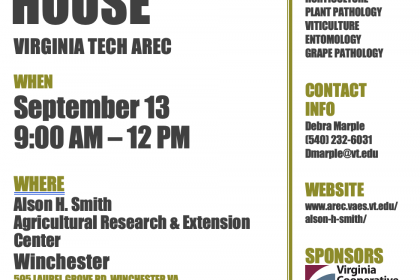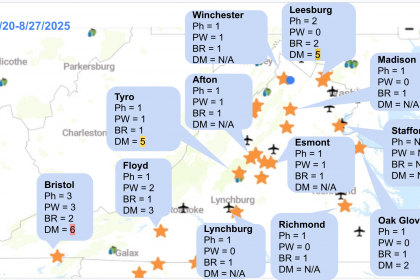
Here are snapshots from the last week, showing the number of days with the risk of each disease: Ph = Phomopsis, PW = Powdery mildew, BR = Black rot, and DM = Downy mildew. N/A means there is no data or some issues with the NEWA or the weather station location. This year, we have been using a different downy mildew model due to inconsistency with the NEWA model. This model uses the past five days of weather to estimate spore production and the next seven-day forecast to estimate the infection risk. If the risk is “High” with a pink highlight, there were enough days with the risk of spore production and more than a few days of rains expected in the next seven days. (Note: yellow highlight ones, which we do not have this week, means the risk of rain in the next seven days is low.)
You can ignore BR and Ph at this point of the season because clusters are no longer susceptible to the infection. We will focus mainly on downy mildew. Several rain events occurred throughout the Commonwealth. Due to high relative humidity during nights and forecasted rains, some locations, especially in Central VA, resulted in high downy mildew risks for the next five days. For those areas, if your vines were not protected for more than 7-10 days, you may want to consider protecting your vines before the next rain events, which seem to happen over the weekend (i.e., today and tomorrow would be good for the spray.)
Please see the previous post for spray recommendations.
Thank you to those who commented on the EPA’s pending decisions on captan. I just learned that they will evaluate changes in Mancozeb regulations, too. Please keep an eye on the announcement from the VCE and others.





